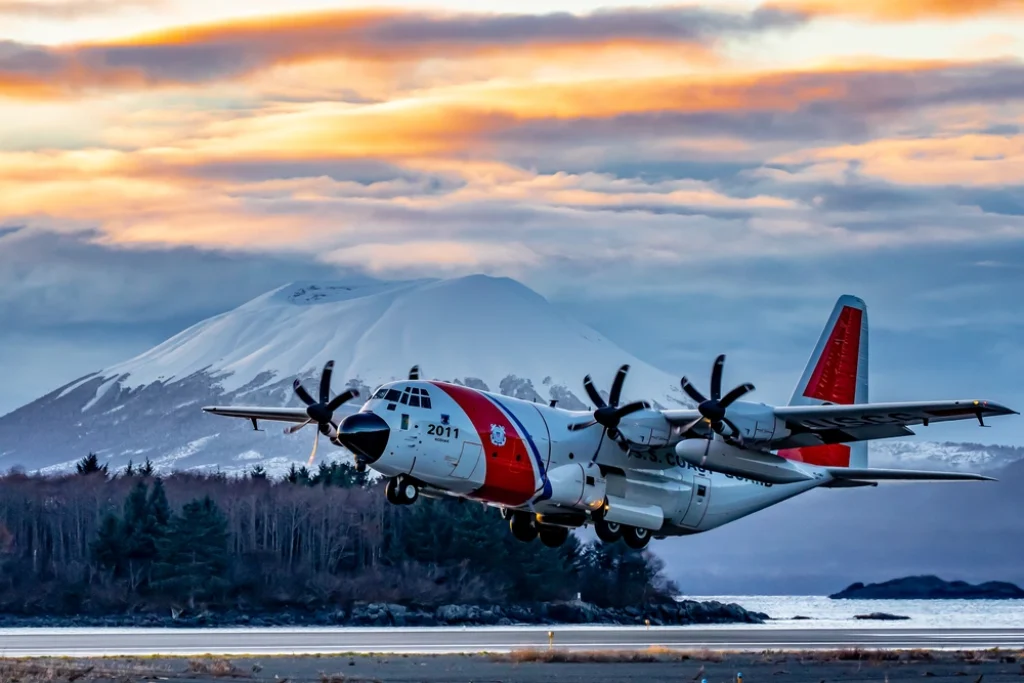The U.S. Coast Guard is stepping up its vigilance in the Arctic after intercepting two Chinese research vessels operating inside U.S. Arctic territory last week — an incident that underscores growing geopolitical competition in the far north.
According to a Coast Guard release, the agency deployed a C-130J Hercules aircraft from Air Station Kodiak on August 5 in response to two Chinese ships, the Ji Di and Zhong Shan Da Xue Ji Di, as they transited the Bering Sea.
The following day, on August 6, the Coast Guard cutter Waesche intercepted the Zhong Shan Da Xue Ji Di as it maneuvered above the Arctic Circle.
Dennis Quaid’s #1 Warning for Americans
“The U.S. Coast Guard’s responses are intended to counter malign activities, defend sovereign interests, and promote maritime conduct consistent with international law and norms,” the statement said.
Officials noted that this was not an isolated incident. The Coast Guard is actively monitoring five similar Chinese vessels in and around U.S. Arctic waters.
“The presence of these vessels is consistent with a three-year trend of increased activity from Chinese research vessels operating in the U.S. Arctic,” the release continued.
“Last year, three Chinese research vessels conducted research operations north of the Bering Strait.”

The uptick in Chinese operations is not occurring in a vacuum. Joint Chinese and Russian military drills in the Arctic have become more frequent and more complex in recent years.
In the summer of 2023, military forces from both nations carried out joint exercises in the Bering Strait — a waterway critical to U.S. defense and trade.
“This kind of increasing levels of military cooperation is new. Certainly, it’s new within and around Alaska,” said Iris A. Ferguson, the deputy assistant secretary of defense for Arctic and Global Resilience, during a December event hosted by the Center for Strategic and International Studies.
“Just this past summer, right after we released our department [Arctic] strategy, we saw a joint bomber patrol off of the coast.”
The growing presence of Russian and Chinese ships in the Arctic has triggered concern not just in Washington, but also among U.S. allies. Earlier this month, NATO deployed a multinational maritime task group — composed of Dutch, Norwegian, Portuguese, and German vessels — to patrol Arctic waters.
Denmark has also taken action, purchasing U.S.-made long-range maritime drones for enhanced Arctic surveillance.
While the U.S. Coast Guard is the nation’s sole surface presence in the Arctic, its fleet has long been stretched thin.
The lack of heavy icebreakers has been a glaring vulnerability for years, prompting decisive action from President Donald Trump in April 2020 with an executive order aimed at improving maritime security in the Arctic.
The Coast Guard reached a milestone on Sunday by commissioning its first polar icebreaker in a quarter century, the cutter Storis. The vessel, once an oilfield supply ship known as the Aiviq, has been refurbished to operate in the harsh Arctic environment.
“This region is undergoing monumental change. Sea ice is receding. New trade routes are opening. Vast reserves of natural resources are becoming accessible.
And our adversaries are moving fast to assert control,” said U.S. Sen. Dan Sullivan, R-Alaska, in a statement commemorating the commissioning of the Storis.
“These are warning signs. If we’re not ready to lead in the Arctic, others will — and they’ll be happy to do it for us,” Sullivan warned.
MORE NEWS: Trump Launches ‘Liberation Day in D.C.,’ Deploys National Guard to ‘Take Our Capital BACK’ [WATCH]
With strategic waterways opening due to melting sea ice and nations racing to lay claim to untapped resources, the Arctic is quickly becoming a new theater for great-power competition. The presence of Chinese research ships — operating so close to U.S. territory — sends a clear signal that America’s rivals are willing to push the limits of maritime law and international norms to gain a foothold in the region.
For the U.S., this means that Arctic readiness is no longer an option but a necessity. Increased patrols, stronger icebreaker capabilities, and close coordination with allies will be critical to ensuring that America remains the dominant force in the High North.
As the Coast Guard’s recent response illustrates, the U.S. is preparing to meet that challenge head-on.
Join the Discussion
COMMENTS POLICY: We have no tolerance for messages of violence, racism, vulgarity, obscenity or other such discourteous behavior. Thank you for contributing to a respectful and useful online dialogue.